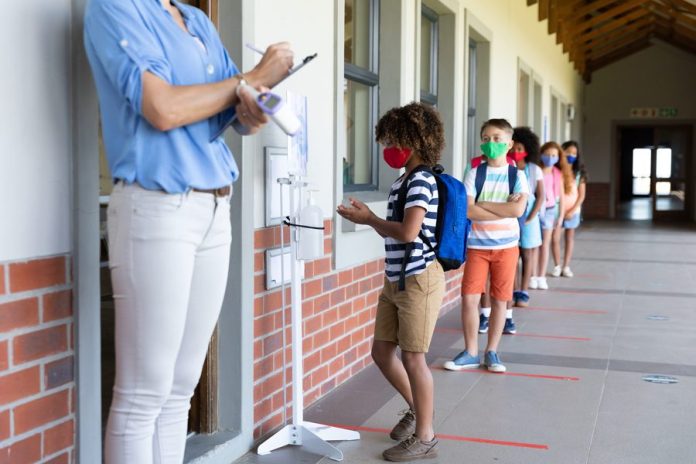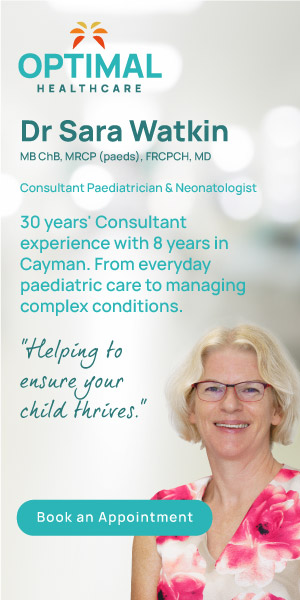Over the past month and a half, Cayman has seen a sudden surge of COVID-19 cases in the community. Many of these cases happen to have been children who are in school. Not only does this put fear in parents and the school but, most importantly, also children. Due to the sudden increase in COVID-19 cases, schools have implemented various systems to communicate with parents, whether through an email chain or student portals. Each can be an effective means of communication between faculty and parents to keep parents updated on the current COVID-19 crisis in schools and what actions needs to be taken.
While parents have said that they believe their child/children’s school is handling the current COVID-19 situation well, this system still has flaws, and many parents have expressed concern that children are also missing out on their education too. I sat down with a parent of one of the affected schools and asked a series of questions on how they feel about how their children’s school is handling the current situation, and in particular the public health requirement for isolation and testing.
Interviewer: How do you feel your child/children’s school is responding to COVID-19?
Parent: There is a policy in place at my children’s school for COVID-19. It is set up in different phases depending on who the affected teacher or student is. If a positive case arises in a class, that class is required to undergo testing before classes re-commence. I believe the policy in place could continue to work fine depending on the situation. All in all, they are handling it okay.
Interviewer: Is communication between parents and faculty reliable?
Parent: Communication is good between staff and parents. However, in a recent situation, communication was not the best. There is a system in place that generates emails to parents. In this instance, it did not work. Communication was poor. In this occurrence, there was a positive case. It was not known about until mentioned in a group a few days later. Parents were then made aware the system had sent out information but due to system error, parents did not receive it. The message was soon resent upon realization of the error.
Interviewer: Do you personally test your child/children regularly or only when a situation makes it necessary?
Parent: Children get tested once exposed to a positive case or are linked closely, so only when necessary.
So, was this school reactive or ready?
The school had clear policies in place and an established response, with a system for immediate communication. However, it appears that these systems had not been tested for readiness and reliability in a situation where there is little or no room for communication error amongst faculty and parents when rapid isolation is necessary for public health safety. Like all systems, there can be flaws, so testing of these systems before they are in place would certainly contribute to true readiness.
In this case, due to the communication errors between the school and parents, parents were in the dark for days. They did not know whether their child had been in contact with another child who had COVID-19 or not. What’s more, given the likelihood of transmission, positive children and subsequently their parents, were likely left at large in the community, at odds with the intentions of our public health response. Simple errors like these can aid in the spread of COVID-19. While it was not intentional, this was preventable.
I spoke with another parent who uses student portals to keep tabs and her child and learned that this system could be set up to give immediate communication alerts to a mobile phone. However, she had never received any guidance or training and said she had to figure out how to use it on her own. Clearly immediate mobile alerts would inform parents far more rapidly, but parents need instructions on how they work. Again, this is evidence of a plan in place but where more work may be needed to ensure it works in real life.
The Cayman Islands were COVID-19 free for a little over a year. This left considerable time to prepare should COVID-19 reappear. With the re-opening of borders, it was always likely that more and more students would be affected. The need for robust systems was clear. Not only schools, but perhaps everyone got too comfortable with the idea that we were COVID-19 free and did not think about when we would again have to deal with it. Like everyone, the sudden surge in cases took the community by surprise, and I can only imagine schools were shocked when so many of their students were testing positive. If systems were put in place, tested, and proven reliable before COVID-19 cases surged, it’s possible there would have been less need for frantic actions in handling the sudden COVID-19 situations.
In another example of public health readiness to suppress the spread of Covid and react swiftly when it emerges, “The Cayman Islands Government has made lateral flow test kits available for parents/guardians to test their children at home twice per week,” stated Premier Panton. Schools have begun the Lateral Flow Test distribution process, doing their part in trying to help keep tabs on COVID-19 cases. Another protocol that they are following is, by instruction of the Cayman Islands Government, it is mandatory to wear masks in school, and many have adapted to this very well, despite controversy in whether young children should wear masks at all. Though home testing is not compulsory, its recommended by Public Health and is crucial in keeping children and the community safe.
However, on social media this week, a parent openly admitted that she was not testing and was instead throwing her lateral flow tests away, stating “I haven’t been tested once, and when they send these kits home with my children I throw them in the garbage.” The was an outcry in the Facebook group, especially as it was suggested the individual worked for a health clinic. However, it highlights another issue with the system; human behaviour. The question many may ask is what this family might do if the school alert said a classmate has tested positive. Is it behaviour like this that helps explain the rapid escalation in cases despite a system intended to suppress that?
Guidance issued by Public Health
Public Health has issued guidance on just what to do in the event of cases or close contact with cases, for instance in a classmate. Schools are doing their best to ensure the safety of their students and follow protocols in place. However, even though communication systems are in place, there is still evidence they remain untested and that instructions given to parents could be improved. If communication could be improved, everyone can stay informed and react rapidly to cases. When problems arise with systems, schools would benefit from being able to pick these up fast so that they can be resolved immediately.
In conclusion, I found strong evidence of planning and readiness at a policy or guideline level but at the same time, less evidence of testing or education of parents. In answer to the question, ready or reacting, it is clearly a combination of both and therefore, with more attention to these issues, there is still further opportunity to improve our public health response at the schools level.




